When you think of feeding birds, most people in Central Illinois think of the winter months because the ground is frozen and often snow-covered. Natural seed supplies have dwindled. It is a good time to help our feathered songbird friends find food, water, and even shelter. If you plan on feeding birds this winter, here are a few tips that may help you and your family plan.
Basic Feeder Types
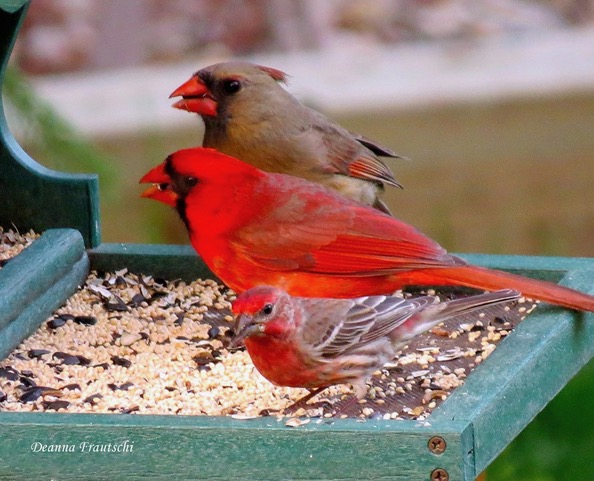
There are several types of feeders suited to different birds. Some of the most common are hopper feeders with a platform that allow birds to perch on the edges and scratch or peck seeds from the sides of the hopper bin (which is usually hard, clear plastic). Colorful cardinals, blue jays and many smaller songbirds are among those who frequent these feeders.
Tube feeders allow smaller birds to perch and pick seed from small holes on their sides. A good seed mix for both the hopper and tube feeders is one that contains black oil sunflower which is high in fat and liked by most songbirds. It should also contain millet, a tiny white seed, for your smaller birds like juncos and sparrows who can’t crack open sunflower seeds with their beaks.
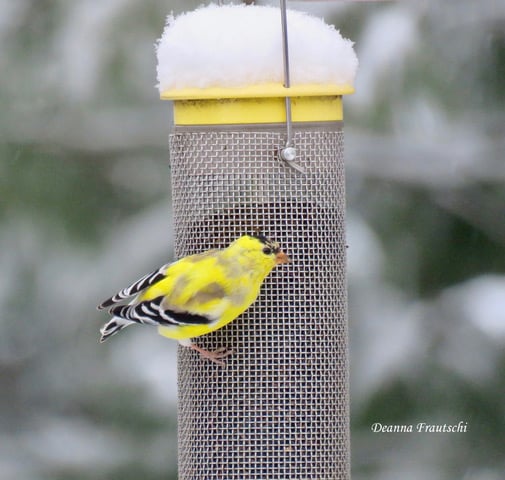
There are tube feeders designed especially to hold thistle seed for finches. Goldfinches and pine siskins really enjoy these. There is also a wire screened mesh feeder that finches can cling to as they peck out the tiny thistle seeds.
Specialty Feeders
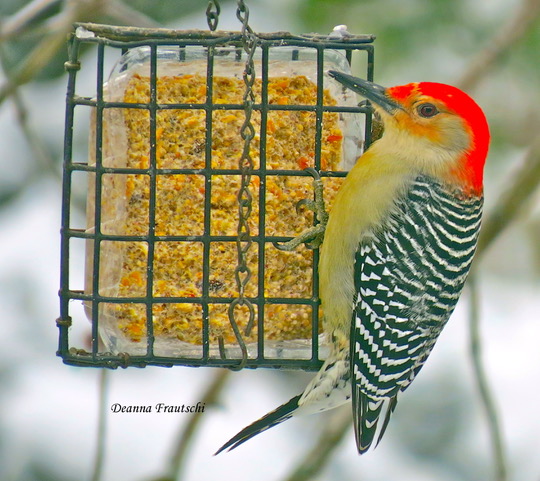
Specialty feeders include those designed to hold suet which is made from rendered beef fat. The high-fat content of suet is especially important to birds in winter. Birds most likely to be attracted to suet in our area are blue jays, woodpeckers, and chickadees.
Peanut feeders that supply peanuts pieces are also attractive to a variety of woodpeckers, chickadees, blue jays, and nuthatches. When it’s really cold, you may be surprised who comes to this feeder. I’ve had cardinals and even Carolina Wrens visit mine.
Caution! Squirrels love peanuts, suet, and black oil sunflower seed too. You may need to baffle your feeders to protect them from stealing all your birds’ seed or chewing on your feeders. Baffles are usually tough plastic or metal cone or stove pipe fixtures which attach to poles below your feeders. They prevent squirrels from climbing or jumping up to them. There are also squirrel-resistant feeders that may help. I feed squirrels too, but they seem to want their food and everybody else’s.
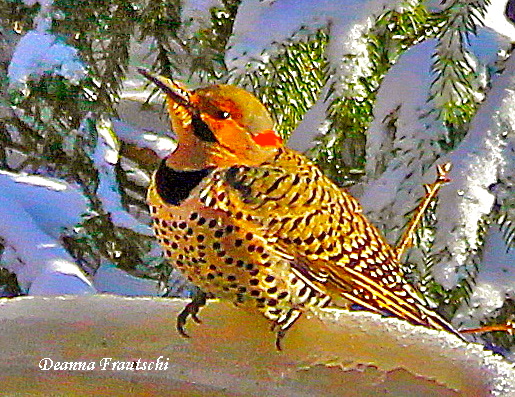
Open Water Source
All birds need water to drink and to help move the oils through their feathers. An open water source can be difficult for birds to find in the winter. You can help by supplying a heated birdbath or even placing a plastic dish of fresh water out daily so your birds to drink and bathe. Keep in mind that songbirds don’t like to go into water that is over their heads. Don’t make your water level deeper than two inches.
Shelter
Trees and shrubs provide excellent natural shelter for songbirds. You can also help by creating a woodpile that birds can hop into when needing protection. When nest boxes for wrens and other birds are left out for winter, a group of small birds may huddle together and roost there on cold nights. You may even be lucky enough to see them enter or leave the box at dusk or dawn.
Winter is a great time to feed the birds because they really need a source of high energy food as well as water and shelter. I feed songbirds all year so they know they will always have a steady source of food available in my yard.
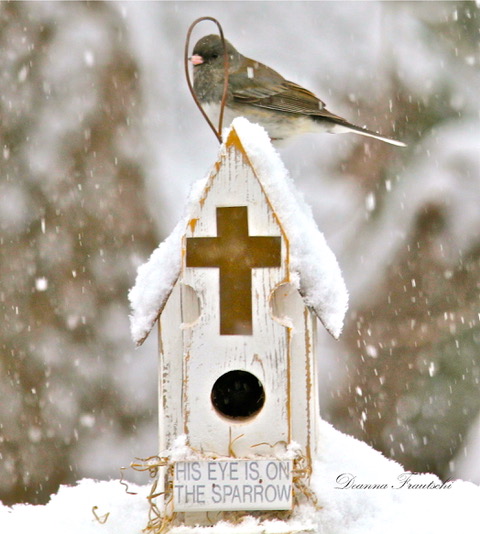
Deanna Frautschi is a local Naturalist who is passionate about connecting families with nature. Using her knowledge of wildlife and her photography skills, she helps others enjoy the nature around them. If you have any questions about exploring nature with your children and grandchildren, you may contact Deanna at Decardinal@aol.com. Join the hundreds who follow her on Facebook where she posts photographs and short video clips of birds and other wildlife taken on her travels as well as in her yard. You can also join her "Nature Lady Lessons" and "Hummingbirds Anonymous" Facebook group pages.
Photos provided by Deanna Frautschi.


